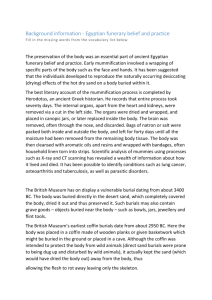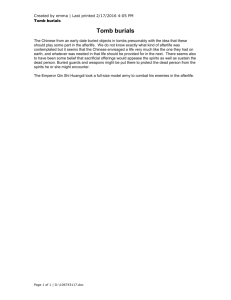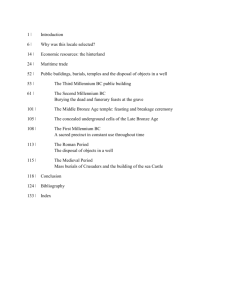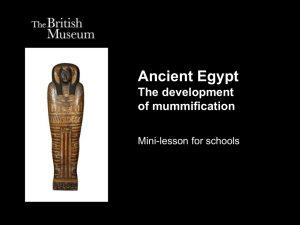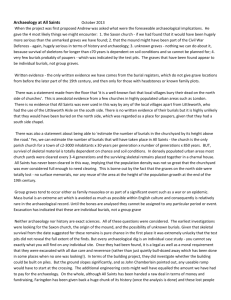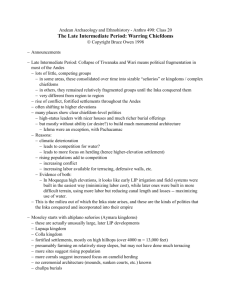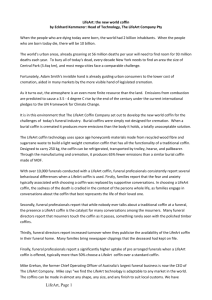Background information - Egyptian funerary belief and practice
advertisement
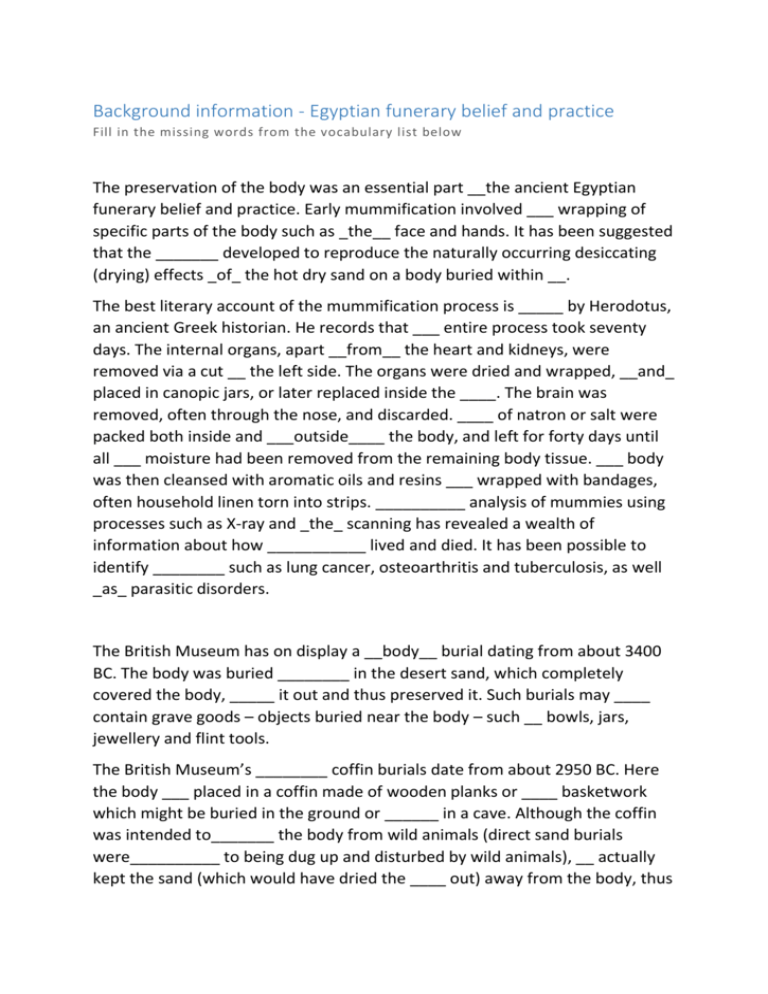
Background information - Egyptian funerary belief and practice Fill in the missing words from the vocabulary list below The preservation of the body was an essential part __the ancient Egyptian funerary belief and practice. Early mummification involved ___ wrapping of specific parts of the body such as _the__ face and hands. It has been suggested that the _______ developed to reproduce the naturally occurring desiccating (drying) effects _of_ the hot dry sand on a body buried within __. The best literary account of the mummification process is _____ by Herodotus, an ancient Greek historian. He records that ___ entire process took seventy days. The internal organs, apart __from__ the heart and kidneys, were removed via a cut __ the left side. The organs were dried and wrapped, __and_ placed in canopic jars, or later replaced inside the ____. The brain was removed, often through the nose, and discarded. ____ of natron or salt were packed both inside and ___outside____ the body, and left for forty days until all ___ moisture had been removed from the remaining body tissue. ___ body was then cleansed with aromatic oils and resins ___ wrapped with bandages, often household linen torn into strips. __________ analysis of mummies using processes such as X-ray and _the_ scanning has revealed a wealth of information about how ___________ lived and died. It has been possible to identify ________ such as lung cancer, osteoarthritis and tuberculosis, as well _as_ parasitic disorders. The British Museum has on display a __body__ burial dating from about 3400 BC. The body was buried ________ in the desert sand, which completely covered the body, _____ it out and thus preserved it. Such burials may ____ contain grave goods – objects buried near the body – such __ bowls, jars, jewellery and flint tools. The British Museum’s ________ coffin burials date from about 2950 BC. Here the body ___ placed in a coffin made of wooden planks or ____ basketwork which might be buried in the ground or ______ in a cave. Although the coffin was intended to_______ the body from wild animals (direct sand burials were__________ to being dug up and disturbed by wild animals), __ actually kept the sand (which would have dried the ____ out) away from the body, thus allowing the flesh __ rot away leaving only the skeleton. The ancient Egyptians _____ have become aware of the problems associated with coffin _______ through opening graves for subsequent burials as well as _______ accidental uncovering of sand burials. Increasing understanding of the _________ of natural preservation, coupled with the religious emphasis on ___ importance of the body in the afterlife, led to ___ development of full mummification which involved artificially drying the ____ before placing it in the coffin to ensure the __________ preservation of the body. a also and bags body x 2 burials complete conditions CT dried directly earliest given in individuals it x 2 of placed process processes protect reed scientific the x 3 through to vulnerable was would
